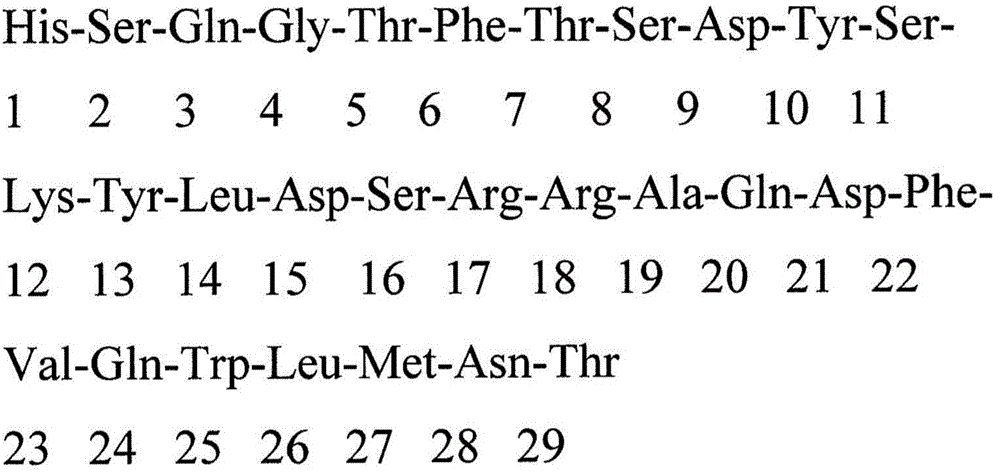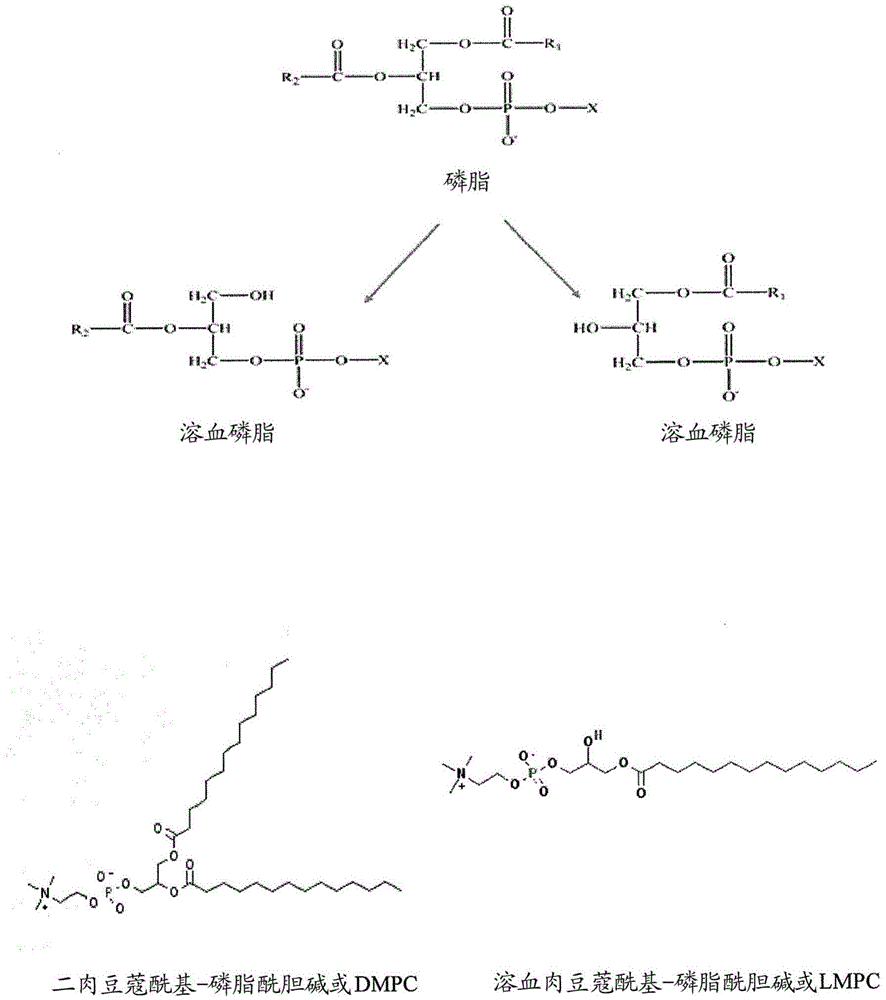Stabilized glucagon nanoemulsions
A technology of glucagon and nanoemulsion, which is applied in the field of glucagon nanoemulsion, and can solve the problems that acidic compositions are irritating and unsuitable for pump application
- Summary
- Abstract
- Description
- Claims
- Application Information
AI Technical Summary
Problems solved by technology
Method used
Image
Examples
Embodiment 1
[0223] Preparation of Physically Stable Glucagon-Containing Nanoemulsions
[0224] The emulsion compositions in Table 2 were prepared to dissolve glucagon. Each composition is coded with a unique "F" number.
[0225] Table 2
[0226]
[0227] *About 1mg / mL glucagon
[0228] **The aqueous phase contained 10% by weight sucrose and 0.0055% by weight edetyl disodium dihydrate in deionized water (DI-water). Ethylenediaminetetraethyl disodium dihydrate was added as an antimicrobial preservative.
[0229] Weigh out 10 g of sucrose and 5.5 mg of disodium ethylenediaminetetraacetic acid dihydrate, add deionized water to 100 g, and dissolve all the solids to obtain an aqueous phase.
[0230] The emulsion is prepared by the following steps:
[0231] 1. Weigh out egg lecithin, medium chain oil and glucagon in plastic vials;
[0232] 2. Add ethanol at 50% batch size;
[0233] 3. Mix to dissolve all solids;
[0234] 4. Use Speed Vac to carry out vacuum drying to remove ethano...
Embodiment 2
[0247] HPLC method and determination of glucagon degradation products by HPLC
[0248] A reverse-phase HPLC method was established to detect glucagon and its degradation products in the nanoemulsions of the present invention. This method was used to evaluate the chemical stability of glucagon in nanoemulsions. The HPLC method conditions are as follows. The HPLC gradients are summarized in Table 4.
[0249] Column: 4.6x 250mm, C-8
[0250] Mobile phase A: 0.05 vol% trifluoroacetic acid in water
[0251] Mobile phase B: 0.05 vol% trifluoroacetic acid in water in acetonitrile
[0252] Column temperature: 35°C
[0253] Wavelength: 214nm
[0254] Autosampler temperature: 5°C
[0255] Table 4
[0256]
[0257] Freshly prepared glucagon ( Plate 1 ) and degraded glucagon ( Plate 2 ) is shown in Figure 3. This method enables the separation and quantification of the major glucagon degradation products, namely, various aspartate cleavage and glutamine deamidation degrad...
Embodiment 3
[0259] Improved Chemical Stability of Glucagon in Nanoemulsions at Neutral pH
[0260] A new batch of the F-3 nanoemulsion composition in Example 1 was prepared, divided into several small portions. Each part was adjusted to a pH value between pH 5 and pH 7.5 with NaOH, filled into glass vials and sealed, and placed at 40°C to accelerate the chemical degradation of glucagon. After 1, 11, 30 and 45 days, each composition was analyzed using the HPLC method described in Example 2 to detect glucagon. The average loss rate of glucagon was calculated and the results were used to reveal the relative stability of glucagon over the pH range studied. Table 5 below shows the loss rate of glucagon expressed in mg / mL / day at different pH values. The characteristic spectrum of pH vs. loss rate is in Figure 4 shown in (top panel).
[0261] table 5
[0262]
[0263] In the second study of pH versus loss rate, F-3 nanoemulsion compositions were prepared in a lower pH range (pH 2.4 to...
PUM
| Property | Measurement | Unit |
|---|---|---|
| diameter | aaaaa | aaaaa |
| molecular weight | aaaaa | aaaaa |
| molecular weight | aaaaa | aaaaa |
Abstract
Description
Claims
Application Information
 Login to View More
Login to View More - R&D
- Intellectual Property
- Life Sciences
- Materials
- Tech Scout
- Unparalleled Data Quality
- Higher Quality Content
- 60% Fewer Hallucinations
Browse by: Latest US Patents, China's latest patents, Technical Efficacy Thesaurus, Application Domain, Technology Topic, Popular Technical Reports.
© 2025 PatSnap. All rights reserved.Legal|Privacy policy|Modern Slavery Act Transparency Statement|Sitemap|About US| Contact US: help@patsnap.com



